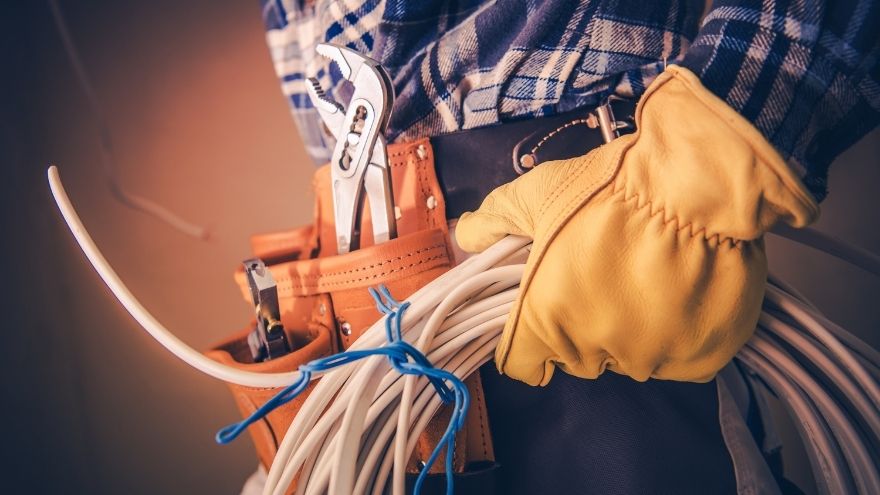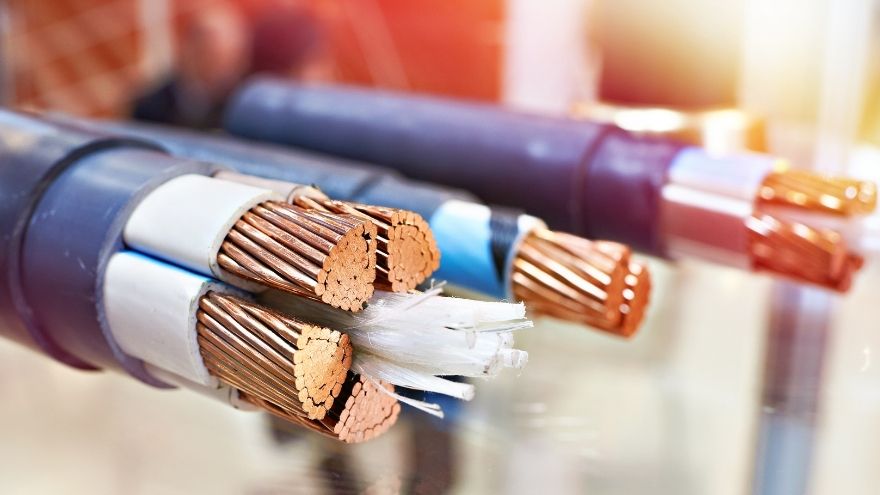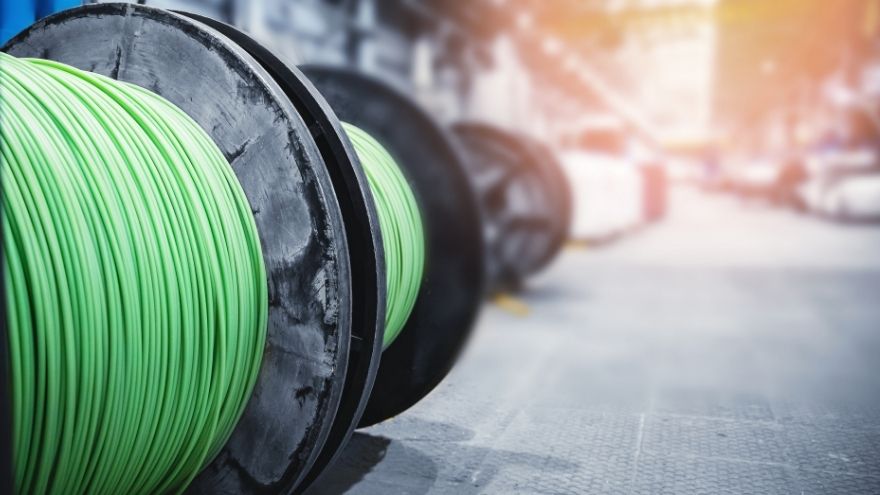The fire resistance of construction products used in them has a key impact on the level of fire safety of buildings. For this reason, the European Commission has introduced regulations common to the entire EU, unifying, among other things, the classification of electric cables and wires. As a result of these regulations, the use of PVC plastics is being abandoned and replaced with halogen-free materials. If you design electrical installations or are responsible for their implementation, be sure to read our guide on fire safety for cables and wires!

From this article you will learn:
- what regulations regulate the use of halogen-free cables,
- what markings are used on halogen-free cables,
- in which installations halogen-free cables are used.
Check out halogen-free cables at Onninen
Cables and wires and fire safety - legal basis
The applicable fire safety regulations are regulated by Regulation No. 305/2011 of the European Parliament and of the Council, briefly called CPR (Construction Products Regulation). It introduces the obligation to classify construction products in terms of fire resistance. It also defines research methods enabling their assessment.
The CPR Regulation applies to all construction products intended for permanent installation, which means that it also covers cables and wires in civil buildings, public utility facilities and engineering structures. It obliges their producers to issue declarations of performance and mark their products with the CE mark.
Requirements for the declaration of performance and methods for verifying the fire resistance of cables and wires are included in the EN 50575 standard, and detailed provisions are included in standards related to, among others, EN 13501-6: Classification of cables and wires in terms of reaction to fire. In this way, for example, the testing methodology was determined allowing cables to be classified in the appropriate class.
These regulations allow all manufacturers and importers to more easily use parameters responsible for fire safety. This applies to both cable design and specifying requirements by the ordering party. It is worth remembering that the regulations do not apply to all cable products, but only to those that are intended for permanent installation in buildings or their parts.
Halogen-free cables

Classes of reaction to fire
Based on the above-mentioned regulations, power cables and wires are classified in a specific class (so-called Euroclass) of fire resistance: Aca, B1ca, B2ca, Cca, Dca, Eca, Fca, where the former is the highest standard and the latter is the lowest.
Each Euroclass indicates the extent to which a construction product (in this case a cable or wire) contributes to the development of fire. The higher the standard, the lower the risk during a fire. Individual classes have been assigned specific parameters that the corresponding products must have. Specific threshold values are verified during laboratory tests in independent research units notified by the European Union. This solution makes the test results fully comparable, regardless of the manufacturer and the Community country. Testing methods are described in the standards EN ISO 1716 (for class Aca) and EN 50399 and EN 60332-1-2 (for others, except class Fca).
Based on the tests carried out, cables and wires are assigned a specific reaction to fire class, where Aca means a completely non-flammable product, and Fca means a flammable product that does not meet the requirements of higher classes. Due to the materials used to produce cables, you will find products ranging from B2ca to Fca on the market.
Depending on the assigned class, cables and wires are subject to Conformity Assessment Systems 1+, 3 or 4, which indicate the type of supporting documents and the scope of production supervision. The difference is mainly that in standards 1+ and 3, tests must be carried out in the already mentioned bodies notified by the European Commission, and in the case of Conformity Assessment System 4 (concerning class Fca), the product can be tested in the manufacturer's laboratory.
Moreover, classes B1ca, B2ca, Cca and Dca require additional classifications in the following areas:
- smoke emissions – parameter s (smoke): s1/s1a/s1b/s2/s3,
- burning drops – parameter d (droplets): d0/d1/d2,
- corrosivity – parameter a (acidity): a1/a2/a3.
Classes Eca and Fca only involve testing on a single vertical sample, so they are not subject to additional classifications. In the case of the B1ca, B2ca, Cca and Dca standards, after all tests have been carried out, the products are given a full marking, for example as follows:
B2ca-s1,d1,a3
In this case:
- B2 – means reaction to fire class,
- ca – short for cable,
- s1 – means smoke emission at the lowest level,
- d1 – means the average class of burning drops,
- a3 – means a high level of release of corrosive gases.
To put it very simply, it can be said that the lower the numerical parameters in the marking, the higher the standard of the product.
Check out halogen-free cables at Onninen
The use of halogen-free cables and wires
Since 2017, manufacturers are obliged to deliver only products that comply with the CPR regulation, label them appropriately and provide appropriate documentation. Moreover, the N SEP -E-007:2017-09 standard specifies minimum requirements for the use of electrical cables and wires in various types of buildings.
Thus, class Dca covers buildings such as ZL I (e.g. theaters or cinemas), ZL II (including hospitals, nurseries), ZL III (public buildings, but not ZL I and ZL II), ZL IV (residential). and ZL V (collective housing) and high-rise buildings. However, this does not apply to their escape routes, which are class B2ca. The Eca standard was assigned to buildings with a smaller volume, i.e. primarily residential buildings (e.g. single-family houses and buildings with a volume of up to 1,000 m3 ), as well as production, warehouse and livestock buildings.
All this means that in new investments, traditional PVC cables have been replaced by halogen-free cables (LSOH). As the name suggests, these products do not contain halogens, i.e. compounds of fluorine, bromine, chlorine, iodine or astatine. Thanks to this, in the event of a fire, they do not emit toxic, corrosive fumes, which pose a serious threat to human health and life. The only products produced by the combustion of these pipes are carbon dioxide and water.

Halogen-free cables therefore fully meet the EU requirements regarding the reaction of construction products to fire. In the event of a fire, they emit only small amounts of smoke without corrosive fumes, which can be crucial in extinguishing the fire and evacuating and saving people's lives. It is worth remembering that most victims of this type of incidents die not from the flames or high temperatures themselves, but from smoke poisoning.
Due to their unique functional properties, halogen-free electric cables are used primarily in buildings that gather many people, but also in facilities that protect valuable material goods.
You will find a wide selection of halogen-free cables at Onninen
When working on modern electrical systems for your clients, buy from our online wholesaler. The Onninen installation wholesaler 's offer includes halogen-free cables and wires with various parameters. You can easily match them to the installation being performed, guaranteeing its users the highest level of safety!
Do you have questions about the industry? Join the Świat Instalacji group!